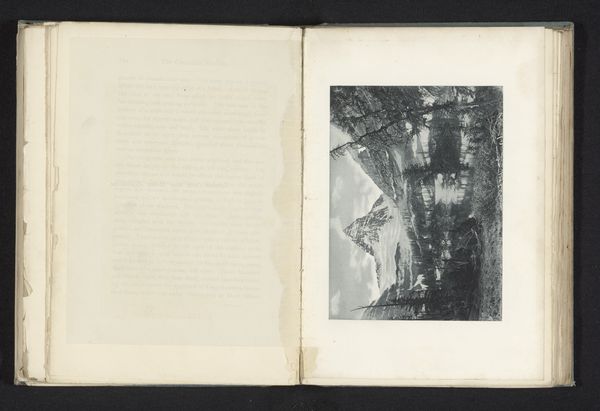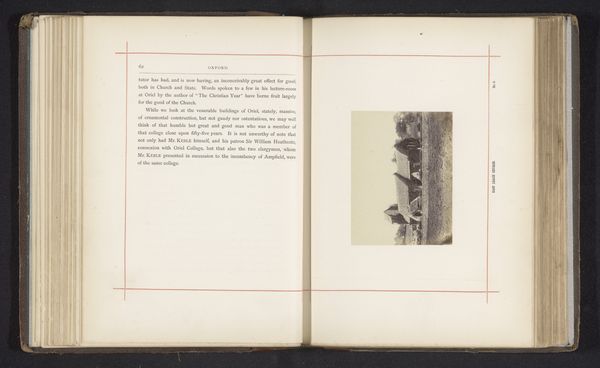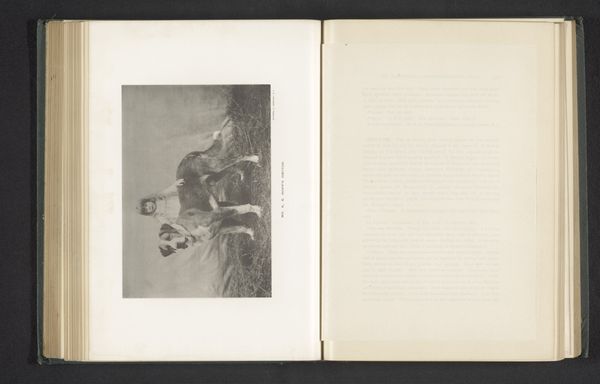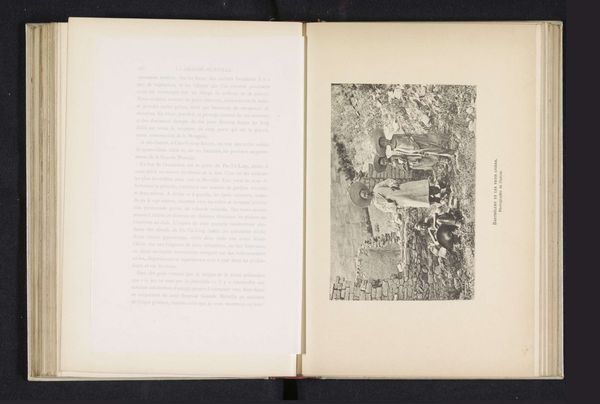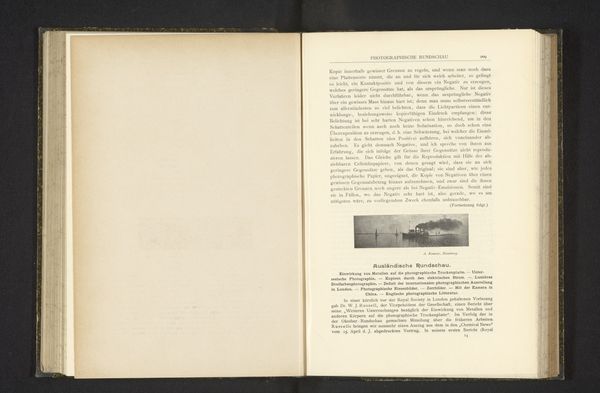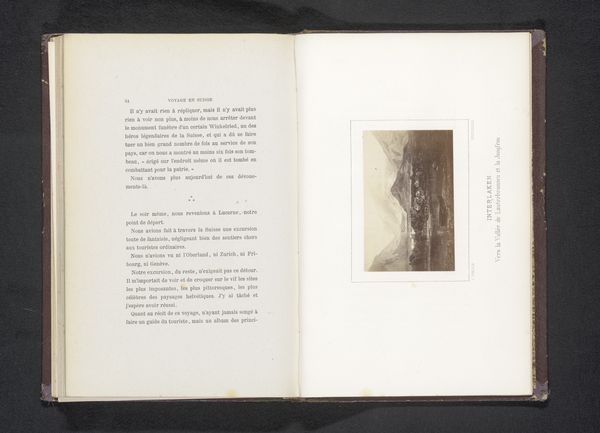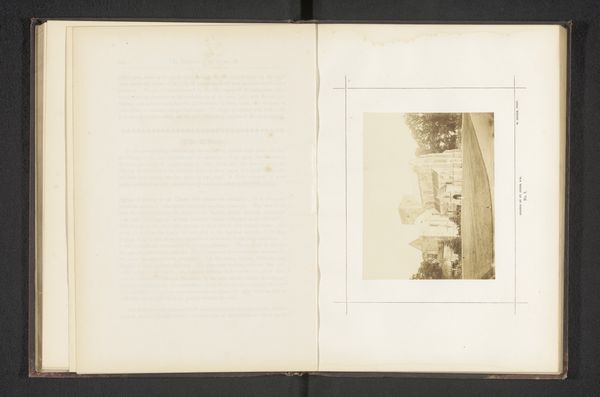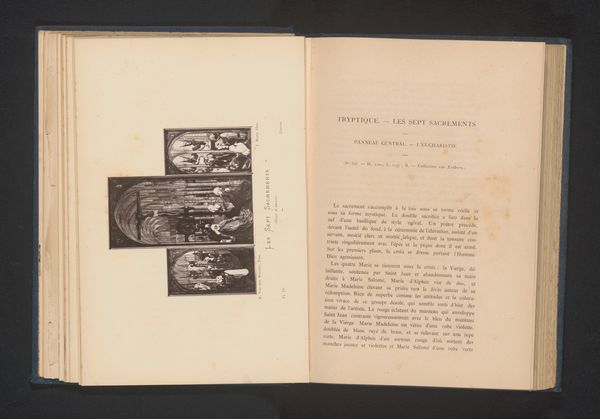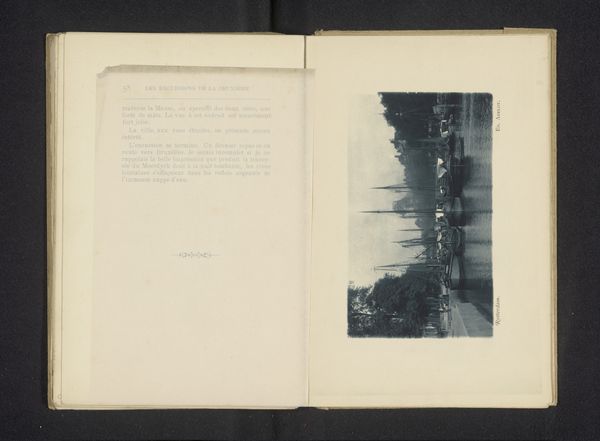
print, photography
#
aged paper
#
homemade paper
#
script typography
# print
#
hand drawn type
#
landscape
#
photography
#
personal sketchbook
#
hand-drawn typeface
#
ink colored
#
sketchbook drawing
#
sketchbook art
#
historical font
#
building
Dimensions: height 70 mm, width 108 mm
Copyright: Rijks Museum: Open Domain
Editor: This is a page from G.G. Napier’s sketchbook, showing a photograph and handwritten notes of what seems to be a rural landscape with a building, probably dating from before 1889. It has an intimate feel, almost like peeking into a personal diary. What historical contexts illuminate this work? Curator: Well, given its inclusion in a sketchbook, it invites us to consider the social and artistic function of the sketchbook itself during that era. The late 19th century witnessed an explosion of amateur photography and a growing interest in recording personal experiences visually. Sketchbooks, like this, became sites for both artistic experimentation and a kind of personal documentation of the world. Editor: So, this isn’t just about the farm, but about how people documented their world? Curator: Precisely! The 'home farm' was probably not just a subject, but an important part of Napier’s identity or social circle. Think about how photography was being used to create a visual record for a rising middle class, mimicking aristocratic portraiture but made accessible by new technologies and distribution methods. The sketchbook then is a powerful framing device. Editor: That makes a lot of sense. Were sketchbooks a common tool to explore ideas related to home and property? Curator: Absolutely. Especially within the context of rising industrialization and urbanization, images of the home and countryside offered a comforting counter-narrative, a retreat to a simpler, idealized past that appealed to an emerging bourgeois public. What's interesting here is the combination of photograph with handwritten script: do you see an inherent power dynamic? What happens when visual media intersects with literacy and privileged education? Editor: It sounds like so much more was involved in making art than just skill, particularly with the added element of wealth or position. I’ll have to examine this dynamic more closely! Curator: Precisely! Understanding those elements provides context, then illuminates a broader understanding about the artwork.
Comments
No comments
Be the first to comment and join the conversation on the ultimate creative platform.

